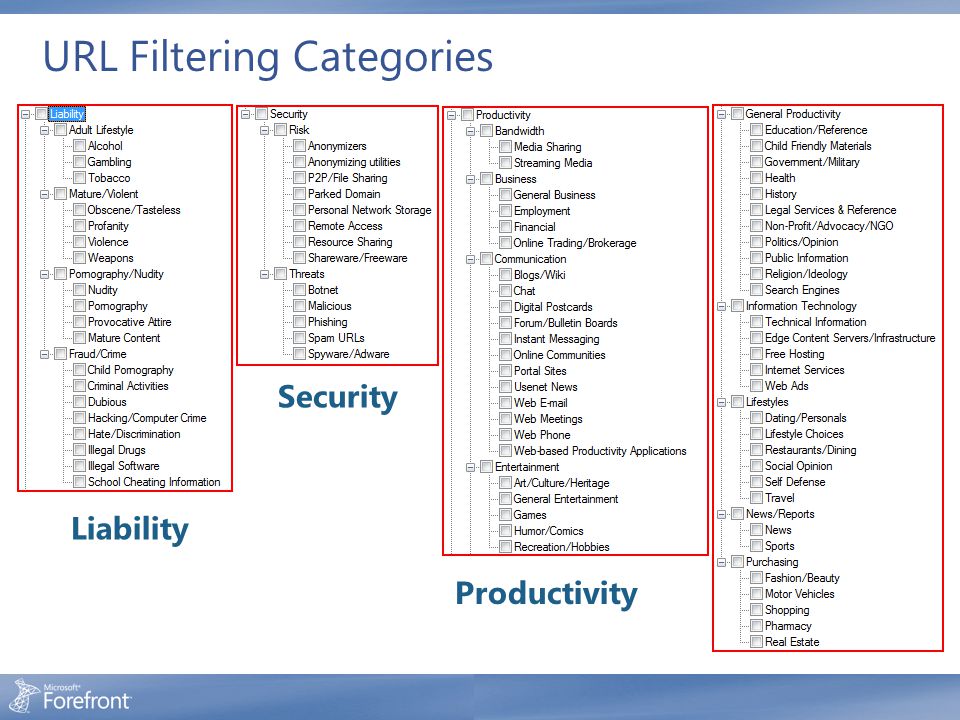
Using the Forms-based Authentication ( FBA) authentication type, ISA Server can be used to pre-authenticate web clients so that traffic from unauthenticated clients to published servers is not allowed.

For example, some organizations use ISA Server 2004 to publish their Microsoft Exchange Server services such as Outlook Web Access (OWA), Outlook Mobile Access (OMA) or ActiveSync. One of the core capabilities of ISA Server 2004, dubbed Secure Server Publishing, was its ability to securely expose their internal servers to Internet. ISA Server 2004 Enterprise Edition included array support, integrated Network Load Balancing (NLB), and Cache Array Routing Protocol (CARP). The rules based configuration was also considerably simplified over ISA Server 2000 version. ISA Server 2004 introduced multi-networking support, integrated virtual private networking configuration, extensible user and authentication models, application layer firewall support, Active Directory integration, SecureNAT, and improved reporting and management features. Microsoft Internet Security and Acceleration Server 2004 (ISA Server 2004) was released on 8 September 2004. ISA Server 2000 reached End of Life on 12 April 2011. In accordance with Microsoft's Support Lifecycle Policy, ISA Server 2000 was the first ISA Server product to use the 10-year support lifecycle with 5 years of Mainstream support and five years of Extended support.
#Microsoft forefront tmg 2010 wiki windows#
ISA Server 2000 required Windows 2000 (any edition), and will also run on Windows Server 2003. ISA Server 2000 introduced the Standard and Enterprise editions, with Enterprise-grade functionality such as High-Availability Clustering not included in the Standard Edition. On 18 March 2001, Microsoft launched Microsoft Internet Security and Acceleration Server 2000 (ISA Server 2000).

Microsoft Proxy Server v2.0 exited the extended support phase and reached end of life on 31 December 2004. Microsoft Proxy Server v2.0 was launched in December 1997, and included better NT Account Integration, improved packet filtering support, and support for a wider range of network protocols. Extended support for Microsoft Proxy Server v1.0 ended on 31 March 2002. Although well-integrated into Windows NT4, Microsoft Proxy Server v1.0 only had basic functionality, and came in only one edition. Support was also provided for IPX/SPX networks (primarily used in legacy Novell NetWare environments), through a WinSock translation/tunnelling client which allowed TCP/IP applications, such as web browsers, to operate transparently without any TCP/IP on the wire. Microsoft Proxy Server v1.0 was a basic product designed to provide Internet Access for clients in a LAN Environment via TCP/IP. Developed under the code-name "Catapult", Microsoft Proxy Server v1.0 was first launched in January 1997, and was designed to run on Windows NT 4.0. The Microsoft Forefront Threat Management Gateway product line originated with Microsoft Proxy Server.
#Microsoft forefront tmg 2010 wiki update#
Microsoft Forefront TMG 2010 can also cache data received through Background Intelligent Transfer Service, such as updates of software published on Microsoft Update website. It also offers web caching: It can cache frequently-accessed web content so that users can access them faster from the local network cache.

In technical sense, Microsoft Forefront TMG offers application layer protection, stateful filtering, content filtering and anti-malware protection.


 0 kommentar(er)
0 kommentar(er)
